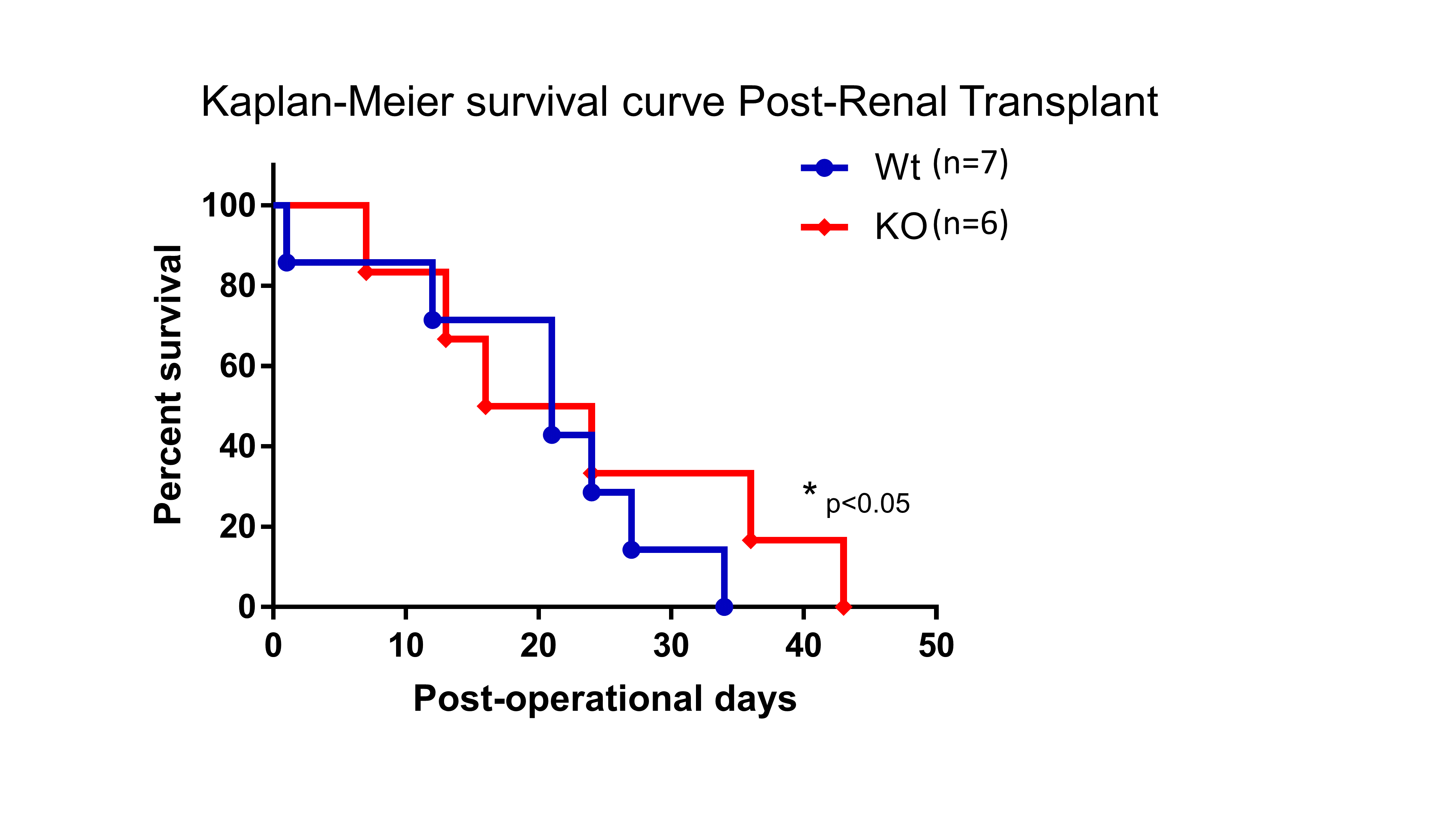Vimentin Inhibition Improves Post-Transplant Survival in a Mouse Renal Transplant Model
1Albany Medical College, Albany, NY, 2Microsurgery Core, Comprehensive Transplant Center, Northwestern University, Feinberg School of Medicine, Chicago, IL, 3Molecular and Cellular Physiology, Albany Medical College, Albany, NY, 4Microsurgery Core, Comprehensive Transplant Center, Northwestern University Feinberg School of Medicine, Chicago, IL, 5Northwestern Univesity, Feinberg School of Medicine, Chicago, IL
Meeting: 2019 American Transplant Congress
Abstract number: D377
Keywords: Fibrosis, Graft survival, Kidney, Kidney transplantation
Session Information
Session Name: Poster Session D: Late Breaking
Session Type: Poster Session
Date: Tuesday, June 4, 2019
Session Time: 6:00pm-7:00pm
 Presentation Time: 6:00pm-7:00pm
Presentation Time: 6:00pm-7:00pm
Location: Hall C & D
*Purpose: Most renal transplants ultimately fail secondary to chronic allograft nephropathy (CAN). The development of Epithelial to Mesenchymal Transition (EMT) in renal tubular epithelial cells has been described as a precursor to CAN. Vimentin, a cytoskeletal protein, is a member of the intermediate filament family of proteins and is expressed during EMT/CAN. What remains unknown is whether vimentin expression is required for EMT in renal grafts leading to CAN
*Methods: 129s6 vimentin global knockout mice (vim -/-) were used as donors in renal transplant experiments in haplotype mis-matched pairs. Balb/c mice underwent renal transplant (H-2b to H-2d) with subsequent bilateral nephrectomy with kidneys from ether wild type mice or vim -/- donors. Mice were not given immunosuppression. Blood and urine samples were obtained every 5-7 days and kidneys removed and analyzed between 30-50 days post-transplant. Kaplan-Meier survival curves were then generated. All animal studies were IACUC approved.
*Results: There was no statistical difference between mice receiving WT vs. KO kidneys for serum creatinine, but there was improved acid-base balance (both anion gap and HCO3). Hemoglobin was also improved in mice obtaining KO kidneys and 1- and 3-weeks post-transplant (p<0.05). Kaplan-Meier survival curves showed improved survival in recipients of vim -/- kidneys. (p<0.05, 32 vs. 42 days; See Figure) N=7WT, N=6KO
*Conclusions: We have previously published that vim -/- mice undergo less fibrosis following both unilateral obstruction as well as ischemia/reperfusion injury. This study establishes an advantage in post-transplant renal function and survival following transplant with vim -/- kidneys. Therefore, vimentin expression may be crucial for the development of CAN with subsequent graft dysfunction. These results provide insight into the role of vimentin in the steps leading to chronic graft loss following transplantation and hint at possible new therapeutic modalities.
To cite this abstract in AMA style:
Lopez-Soler R, Zhang Z, Chin H, Wang J, Ridge K. Vimentin Inhibition Improves Post-Transplant Survival in a Mouse Renal Transplant Model [abstract]. Am J Transplant. 2019; 19 (suppl 3). https://atcmeetingabstracts.com/abstract/vimentin-inhibition-improves-post-transplant-survival-in-a-mouse-renal-transplant-model/. Accessed December 27, 2025.« Back to 2019 American Transplant Congress

